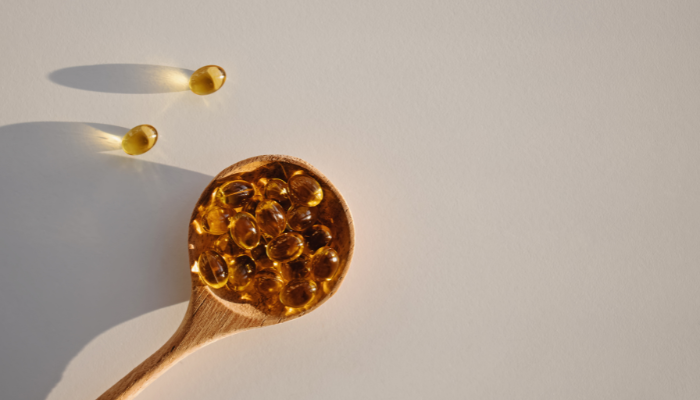Why Vitamin D Matters in Child Development
For parents, ensuring children get all the nutrients they need can feel like a juggling act, with vitamin D often overlooked in favor of more familiar nutrients like calcium or vitamin C. However, vitamin D is crucial for a child’s health, from their first few months all the way through adolescence. It’s especially essential for building a strong foundation of physical and mental health, supporting everything from bone development to immune resilience. The body produces vitamin D naturally through sunlight exposure, yet getting adequate levels through sunlight alone can be challenging, especially in certain climates or seasons.
In this article, we’ll explore why vitamin D is so vital to your child’s growth and how parents can ensure they get enough, helping support long-term health and development.
What Is Vitamin D? A Quick Overview
Vitamin D is a fat-soluble vitamin that acts almost like a hormone within the body. Unlike other vitamins that must be obtained from diet alone, vitamin D can be synthesized when sunlight hits the skin. This synthesis is a unique characteristic, as no other essential vitamin is produced in quite the same way. However, vitamin D can also be sourced from certain foods and supplements.
Once produced or ingested, vitamin D aids in the absorption of key minerals, particularly calcium and phosphorus, which are essential for bone and muscle health. While often associated with bone strength, vitamin D’s benefits extend to immune function, brain health, and emotional well-being, making it a cornerstone of childhood development.Why Vitamin D Is Essential for Children
The benefits of vitamin D in a child’s development are both broad and profound. Here are the primary ways it contributes to a child’s health.
a. Supporting Bone Growth and Strength
Vitamin D’s role in bone development is foundational. It promotes the absorption of calcium and phosphorus, minerals that are critical to developing strong, healthy bones. Without sufficient vitamin D, children may face a range of bone health issues, including rickets, a condition that leads to soft and weak bones. Rickets can cause painful deformities and growth delays, so early prevention through adequate vitamin D is essential.
Ensuring that children receive enough vitamin D, particularly during critical growth phases, helps lay the groundwork for a lifetime of bone health. Children who get enough vitamin D are less likely to experience fractures and bone-related issues as they grow older.
b. Building a Strong Immune System
Vitamin D is essential for immune function, and studies have shown that it can reduce susceptibility to infections. Vitamin D assists in regulating immune responses, reducing inflammation, and supporting the production of antibodies. For children, a strong immune system is especially crucial as they encounter new germs and viruses, both at home and in school.
Ensuring your child has adequate levels of vitamin D can help keep common infections, like colds and flu, at bay. Additionally, early vitamin D supplementation has been associated with a reduced risk of developing autoimmune conditions, such as Type 1 diabetes, later in life.

How Vitamin D Impacts Brain Development and Mood
Vitamin D’s benefits extend well beyond physical health, influencing emotional and cognitive development as well. The brain has numerous vitamin D receptors, especially in regions involved in mood regulation and emotional processing. Research suggests that low levels of vitamin D are associated with mood disorders, including depression, in both children and teens. Adequate vitamin D may help children maintain stable moods and may even improve focus and learning ability.
During childhood and adolescence, when emotional regulation skills are developing, having sufficient vitamin D can act as an added layer of support for mental wellness. While vitamin D alone can’t address complex emotional issues, ensuring sufficient levels may support other mood-stabilizing efforts, giving children a well-rounded foundation for emotional health.
Sources of Vitamin D for Kids
With the importance of vitamin D in mind, let’s look at the best ways to ensure children get enough of this crucial nutrient.
a. Sunlight as a Natural Source
Sunlight remains the most natural and accessible source of vitamin D. When UVB rays from the sun hit the skin, they trigger vitamin D production. For many families, especially those in sunny climates, daily outdoor play can provide a significant portion of their vitamin D needs. Experts generally recommend 10-15 minutes of sun exposure to the face, arms, and legs several times a week, without sunscreen, for adequate vitamin D synthesis. However, this can vary depending on skin type, location, and season.
During the winter months or in less sunny regions, outdoor playtime may not be enough, and children may need to rely more on diet and supplements.
b. Dietary Sources Rich in Vitamin D
Adding vitamin D-rich foods to your child’s diet is another effective strategy. Foods naturally rich in vitamin D include fatty fish like salmon, mackerel, and sardines. Egg yolks, beef liver, and cheese also provide some vitamin D. Additionally, many foods are fortified with vitamin D, such as milk, orange juice, and some breakfast cereals.
While these foods can contribute to daily vitamin D intake, it may be challenging for children to consume enough through diet alone, especially if they are picky eaters or follow certain dietary restrictions. For families facing these challenges, supplementation may be the best solution.
c. Vitamin D Supplements: When and Why They’re Needed
When sunlight and diet aren’t enough to meet vitamin D needs, supplements are a safe and effective option. Vitamin D supplements are available in both liquid and tablet forms, and pediatricians can recommend appropriate doses based on age, health, and lifestyle factors. For babies, especially those who are breastfed, vitamin D drops are commonly recommended since breast milk often lacks sufficient vitamin D. Older children may benefit from chewable or gummy supplements that provide the recommended daily allowance.
Parents should always consult their child’s doctor before starting supplements to ensure the dosage aligns with their individual health needs.Signs Your Child May Be Low on Vitamin D
Vitamin D deficiency can be subtle, and symptoms may be easily overlooked or attributed to other causes. If you suspect your child may not be getting enough vitamin D, here are some potential signs to watch for:
- Frequent Illnesses: Children with low vitamin D levels may experience more colds, flus, or other infections.
- Bone Pain or Weakness: Children may complain of bone pain, or you may notice they seem more prone to falls or fractures.
- Delayed Growth: Low vitamin D can impact overall growth and physical development.
- Mood Changes: Persistent irritability, sadness, or emotional outbursts could be linked to low vitamin D.
If any of these symptoms are present, a simple blood test can check your child’s vitamin D levels, and your pediatrician can guide you on the best way to address any deficiency.
How Much Vitamin D Does Your Child Need?
Understanding the correct amount of vitamin D for your child is essential, as needs vary by age and individual health factors.
- Infants (0-12 months): Experts generally recommend 400 IU (International Units) of vitamin D daily for infants. This is especially important for breastfed babies, as they may not receive enough from breast milk alone.
- Children and Adolescents (1-18 years): For this age group, the recommended daily intake is between 600-1,000 IU. However, children with limited sun exposure or certain health conditions may need higher amounts, which should be determined by a healthcare provider.
It’s worth noting that these recommendations serve as general guidelines, and parents should always check with a pediatrician to confirm the best dosage for their child.

Practical Tips for Ensuring Adequate Vitamin D
Ensuring your child gets enough vitamin D doesn’t have to be difficult. With these simple, practical strategies, you can help boost their vitamin D intake naturally.
- Encourage outdoor play: Let your child enjoy time outside, especially in the morning or midday when the sun’s UVB rays are strongest. Even in colder months, spending some time outdoors can make a difference.
- Incorporate vitamin D-rich foods: Add foods high in vitamin D to meals, such as salmon, eggs, and fortified dairy or plant-based milk. Including these in family meals can help boost everyone’s intake.
- Choose supplements if needed: For children who don’t get enough sunlight or are picky eaters, vitamin D supplements are an effective and safe option. Speak to your pediatrician about the right type and dose for your child.
- Optimize mealtime for absorption: Since vitamin D is fat-soluble, it’s best absorbed when taken with a meal containing healthy fats, such as avocado, olive oil, or nuts. This can help maximize the benefits of both dietary vitamin D and supplements.
Taking these small, manageable steps can ensure your child gets enough vitamin D, even on busy days.
The Emotional Impact of Vitamin D Deficiency on Kids and Parents
It’s important to acknowledge the emotional side of vitamin D deficiency. Parents often juggle many responsibilities, and worrying about their child’s nutrient levels can add extra stress. The impact of a deficiency isn’t just physical; it can also affect children’s emotional health, potentially leading to irritability, mood swings, and even depression. As a parent, it can be challenging to watch your child struggle with emotional ups and downs.
By understanding the connection between vitamin D and mood, parents can feel empowered to address this issue with proactive steps. Ensuring a sufficient intake of vitamin D can offer valuable support for emotional balance and help children face the ups and downs of childhood with resilience.
Read Also Our Latest Article: How to Handle Sickness at Nursery: What Parents Need to Know
Follow us
